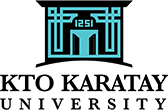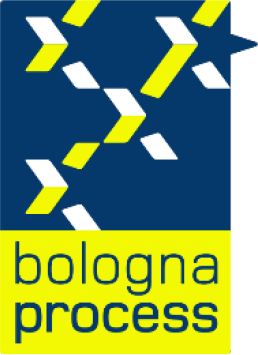Medical Imaging Techniques
Course Details

KTO KARATAY UNIVERSITY
Vocational School of Medical Services
Programme of Medical Imaging Techniques
Course Details
Vocational School of Medical Services
Programme of Medical Imaging Techniques
Course Details

| Course Code | Course Name | Year | Period | Semester | T+A+L | Credit | ECTS |
|---|---|---|---|---|---|---|---|
| 02921014 | Medical Terminology | 1 | Spring | 2 | 2+0+0 | 3 | 3 |
| Course Type | Elective |
| Course Cycle | Associate (Short Cycle) (TQF-HE: Level 5 / QF-EHEA: Short Cycle / EQF-LLL: Level 5) |
| Course Language | Turkish |
| Methods and Techniques | - |
| Mode of Delivery | Face to Face |
| Prerequisites | - |
| Coordinator | - |
| Instructor(s) | Lect. Merve ARI |
| Instructor Assistant(s) | - |
Course Instructor(s)
| Name and Surname | Room | E-Mail Address | Internal | Meeting Hours |
|---|---|---|---|---|
| Lect. Merve ARI | B-BZ27 | [email protected] | 7356 |
Course Content
Terminology used in the basic latin and general information, general terms, prefixes, roots, suffixes, Terminology and tools and equipment terminology used in medical imaging services, nervous system and psychiatric terms, medical terms related to respiratory and digestive system, medical terms related to constructive organs, medical terms related to urine, genital and endocrine system, medical terms related to eye, ear-nose-throat, and gland, general terms and abbreviations.
Objectives of the Course
To acquire the knowledge, skills and competencies required to pronounce, write, distinguish and use the medical terms related to the profession correctly.
Contribution of the Course to Field Teaching
| Basic Vocational Courses | |
| Specialization / Field Courses | |
| Support Courses | X |
| Transferable Skills Courses | |
| Humanities, Communication and Management Skills Courses |
Relationships between Course Learning Outcomes and Program Outcomes
| Relationship Levels | ||||
| Lowest | Low | Medium | High | Highest |
| 1 | 2 | 3 | 4 | 5 |
| # | Program Learning Outcomes | Level |
|---|---|---|
| P2 | Has knowledge of general medical terms, first aid issues related to anatomical and physiological issues related to the field of health, and uses applied knowledge. | 5 |
Course Learning Outcomes
| Upon the successful completion of this course, students will be able to: | |||
|---|---|---|---|
| No | Learning Outcomes | Outcome Relationship | Measurement Method ** |
| O1 | Ability to express basic theoretical knowledge about the field of health. | P.2.1 | 1 |
| O2 | Ability to understand the basic principles related to the field of health. | P.2.2 | 1 |
| O3 | Ability to integrate basic theoretical knowledge about health into the field of medical imaging techniques | P.2.3 | 1 |
| O4 | Ability to distinguish the basic elements of theoretical knowledge related to the field of health. | P.2.4 | 1 |
| ** Written Exam: 1, Oral Exam: 2, Homework: 3, Lab./Exam: 4, Seminar/Presentation: 5, Term Paper: 6, Application: 7 | |||
Weekly Detailed Course Contents
| Week | Topics |
|---|---|
| 1 | Basic Latin and general information |
| 2 | General terms |
| 3 | Prefixes |
| 4 | Prefixes |
| 5 | Word Roots |
| 6 | Attachments |
| 7 | Terms used in medical imaging services |
| 8 | Midterm |
| 9 | Nervous system and psychiatric terms, |
| 10 | Medical terms related to respiratory and digestive system |
| 11 | Medical terms for cardiovascular system and blood and blood forming organs |
| 12 | Medical terms related to urinary, genital and endocrine systems |
| 13 | Medical terms for eye, ear-nose-throat and forehead |
| 14 | General terms and abbreviations |
Textbook or Material
| Resources | Ekinci, S., Hatipoğlu, H.G. (2020). Medical Terminology Textbook for Colleges. Hatiboğlu Publishing, 11th Edition, Ankara. |
Evaluation Method and Passing Criteria
| In-Term Studies | Quantity | Percentage |
|---|---|---|
| Attendance | - | - |
| Laboratory | - | - |
| Practice | - | - |
| Field Study | - | - |
| Course Specific Internship (If Any) | - | - |
| Homework | - | - |
| Presentation | - | - |
| Projects | - | - |
| Seminar | - | - |
| Quiz | - | - |
| Listening | - | - |
| Midterms | 1 | 40 (%) |
| Final Exam | 1 | 60 (%) |
| Total | 100 (%) | |
ECTS / Working Load Table
| Quantity | Duration | Total Work Load | |
|---|---|---|---|
| Course Week Number and Time | 0 | 0 | 0 |
| Out-of-Class Study Time (Pre-study, Library, Reinforcement) | 3 | 5 | 15 |
| Midterms | 1 | 30 | 30 |
| Quiz | 0 | 0 | 0 |
| Homework | 0 | 0 | 0 |
| Practice | 0 | 0 | 0 |
| Laboratory | 0 | 0 | 0 |
| Project | 0 | 0 | 0 |
| Workshop | 0 | 0 | 0 |
| Presentation/Seminar Preparation | 0 | 0 | 0 |
| Fieldwork | 0 | 0 | 0 |
| Final Exam | 1 | 45 | 45 |
| Other | 0 | 0 | 0 |
| Total Work Load: | 90 | ||
| Total Work Load / 30 | 3 | ||
| Course ECTS Credits: | 3 | ||
Course - Learning Outcomes Matrix
| Relationship Levels | ||||
| Lowest | Low | Medium | High | Highest |
| 1 | 2 | 3 | 4 | 5 |
| # | Learning Outcomes | P2 |
|---|---|---|
| O1 | Ability to express basic theoretical knowledge about the field of health. | 5 |
| O2 | Ability to understand the basic principles related to the field of health. | 5 |
| O3 | Ability to integrate basic theoretical knowledge about health into the field of medical imaging techniques | 3 |
| O4 | Ability to distinguish the basic elements of theoretical knowledge related to the field of health. | 3 |
